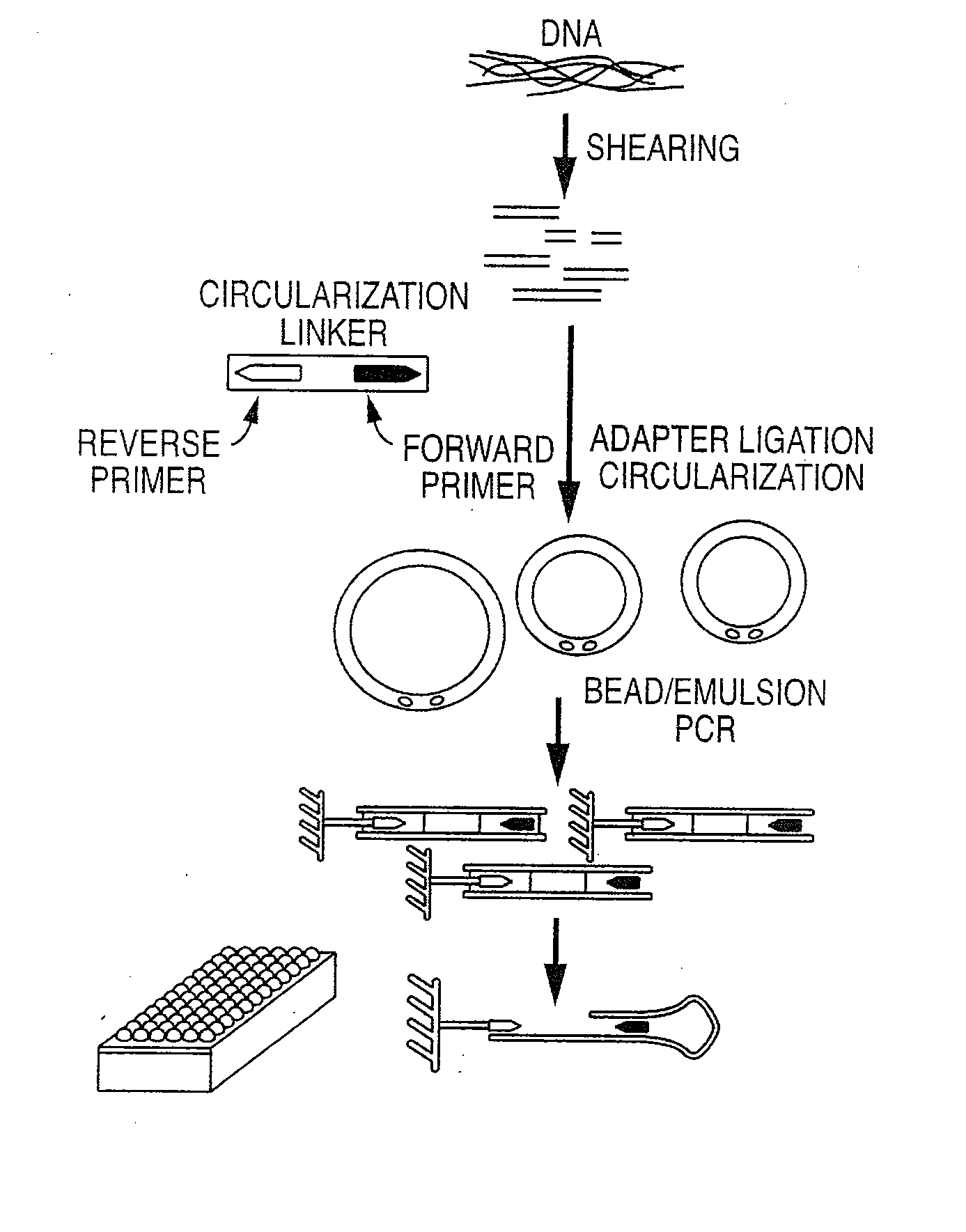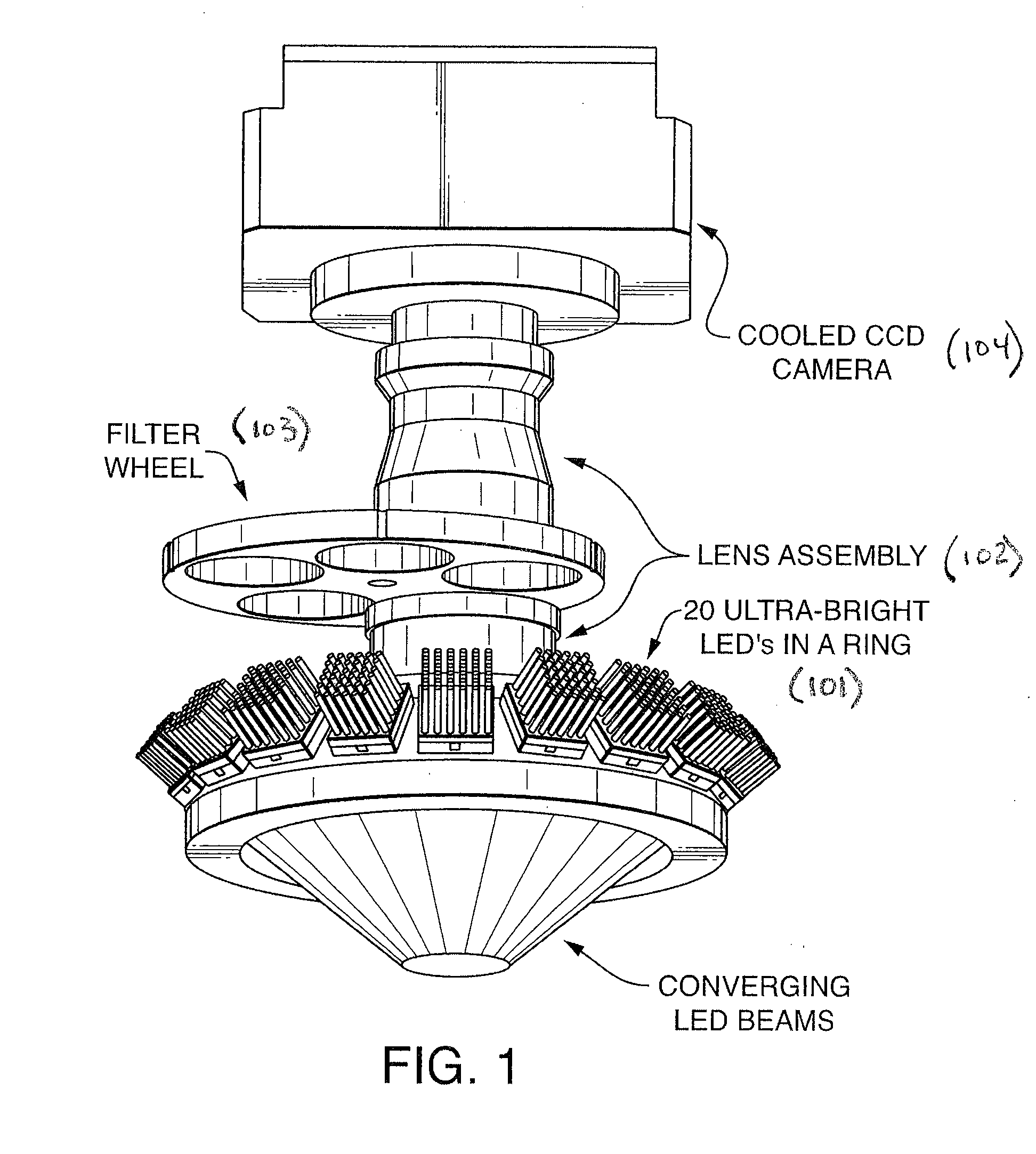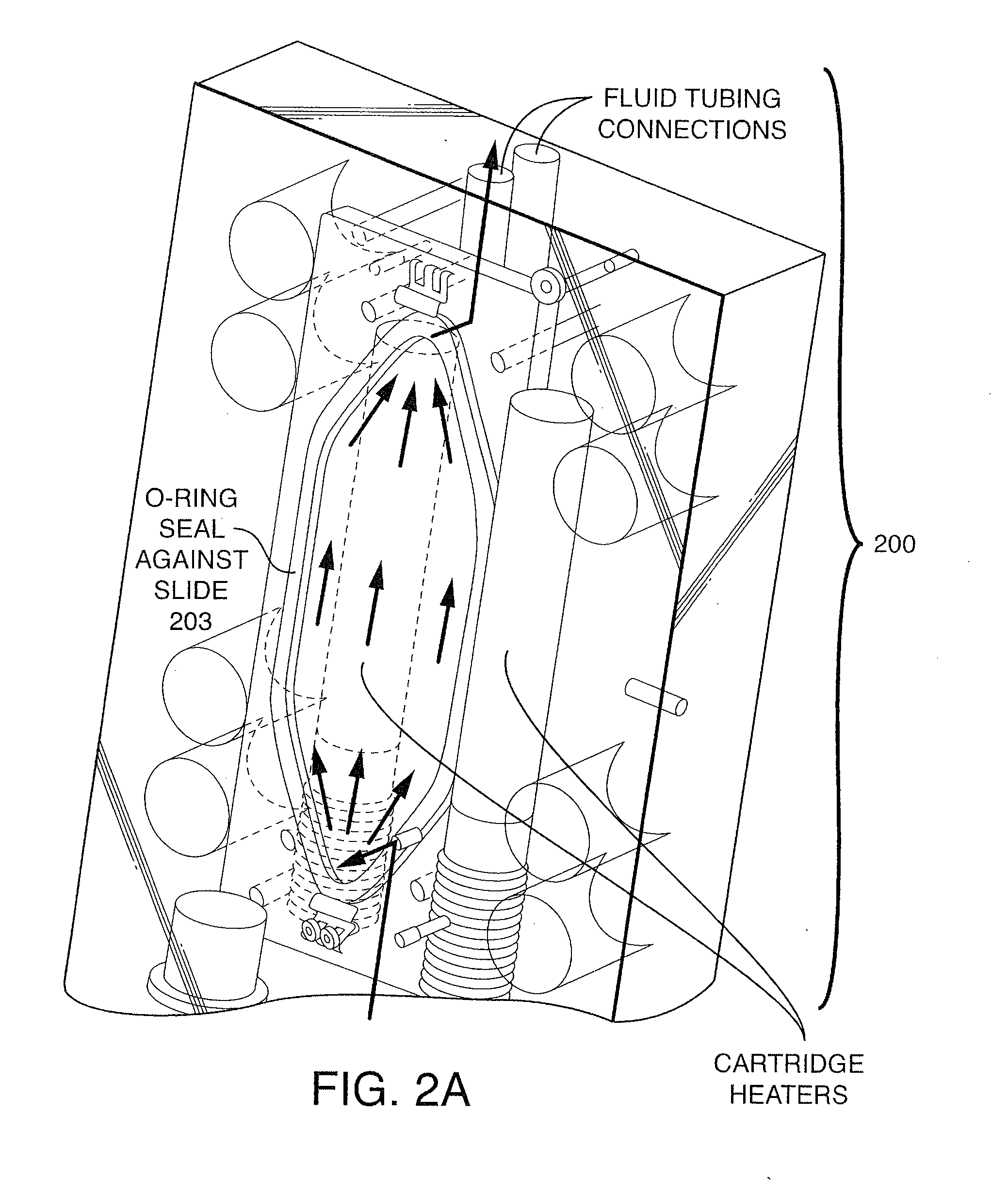Methods And Devices For Sequencing Nucleic Acids In Smaller Batches
a technology of sequencing nucleic acids and small batches, which is applied in the field of methods and devices for sequencing nucleic acids in small batches, can solve the problems of unfavorable results, waste and higher costs, and the average researcher with the smaller project to be excluded or (at best) forced to wait days to weeks, so as to reduce spectral crosstalk and reduce the effect of spectral crosstalk
- Summary
- Abstract
- Description
- Claims
- Application Information
AI Technical Summary
Benefits of technology
Problems solved by technology
Method used
Image
Examples
example 1
Materials And Methods
[0435]The following is a brief description of the exemplary materials and methods used in the following Examples. All solvents and reagents were reagent grades, purchased commercially and used without further purification. Protected nucleosides 5′-O-(tert-butyldimethylsilyl)-2′-deoxythymidine, N4-benzoyl-5′-O-tert-butyldimethylsilyl-2′-deoxycytidine, N6-Benzoyl-5′-O-tert-butyldimethylsilyl-2′-deoxyadenosine, N2-isobutyryl-5′-O-(tert-butyldimethylsilyl)-2′-deoxyguanosine were purchased from CNH Technologies, Inc. All other chemicals were purchased from Sigma-Aldrich.
example 2
Synthesis of 3′-O-Azidomethyl Nucleotides
[0436]The synthesis of 3′-O-azidomethyl-dNPTs is described in FIG. 20. Briefly, reaction of 5′-O-TBDMS-2′-deoxynucleosides (5) with a mixture of DMSO, acetic acid, and acetic anhydride installed the 3′-O-methylthiomethyl group (3′-O-MTM, 6), which upon treatment with SO2Cl2 converted to activated 3′-O—CH2Cl (7). The latter can be monitored in TLC as 3′-OH (5) after dissolving in wet organic solvent due to fast hydrolysis of the —CH2Cl group. The 3′-O—CH2Cl2′-deoxynucleoside (7) is then treated with NaN3 in dry DMF without purification to convert to 3′-O—CH2N3 (8). 3′-O-azidomethyl-2′-deoxynucleosides of A, T, and C (9a-9c) were obtained in good yield after deprotection of the 5′-O-TBDMS group as described in the FIG. 20. Similar synthesis route for guanosine (G, 9d), lead only very low yield (>10%) due to formation of a number of side reaction products. To circumvent this, a new method was introduced for the synthesis of guanosine analog (14)...
example 3
Synthesis of N6-benzoyl-3′-O-(azidomethyl)-dA (9a)
[0437]The following describes exemplary synthesis steps for compounds shown in FIG. 20.
A. Synthesis of N6-Benzoyl-3′-O-(methylthiomethyl)-5′-O-(tert-butyldimethylsilyl)-2′-deoxyadenosine (6a)
[0438]3.0 g N6-Benzoyl-5′-O-tert-butyldimethylsilyl-2′-deoxyadenosine (5a) (6.38 mmol) was dissolved in a mixture consisting of 11.96 mL DMSO, 5.46 mL acetic acid, and 17.55 mL acetic anhydride and stirred at room temperature for 48 h. The reaction mixture was then neutralized treating with a sufficient amount of saturated NaHCO3 solution and extracted with CH2Cl2 (3×100 mL). The combined organic extract was then washed with a saturated NaHCO3 solution (100 mL), dried over Na2SO4, and concentrated under vacuum. The resultant yellowish oil was then purified on silica gel column (Hex:EtOAc / 1:1 to 1:4) to obtain the product N6-benzoyl-3′-O-(methylthiomethyl)-5′-O-(tert-butyldimethylsilyl)-2′-deoxyadenosine (6a) as white powder in 71% yield (2.4 g, R...
PUM
| Property | Measurement | Unit |
|---|---|---|
| volume | aaaaa | aaaaa |
| volume | aaaaa | aaaaa |
| size | aaaaa | aaaaa |
Abstract
Description
Claims
Application Information
 Login to View More
Login to View More - R&D
- Intellectual Property
- Life Sciences
- Materials
- Tech Scout
- Unparalleled Data Quality
- Higher Quality Content
- 60% Fewer Hallucinations
Browse by: Latest US Patents, China's latest patents, Technical Efficacy Thesaurus, Application Domain, Technology Topic, Popular Technical Reports.
© 2025 PatSnap. All rights reserved.Legal|Privacy policy|Modern Slavery Act Transparency Statement|Sitemap|About US| Contact US: help@patsnap.com



